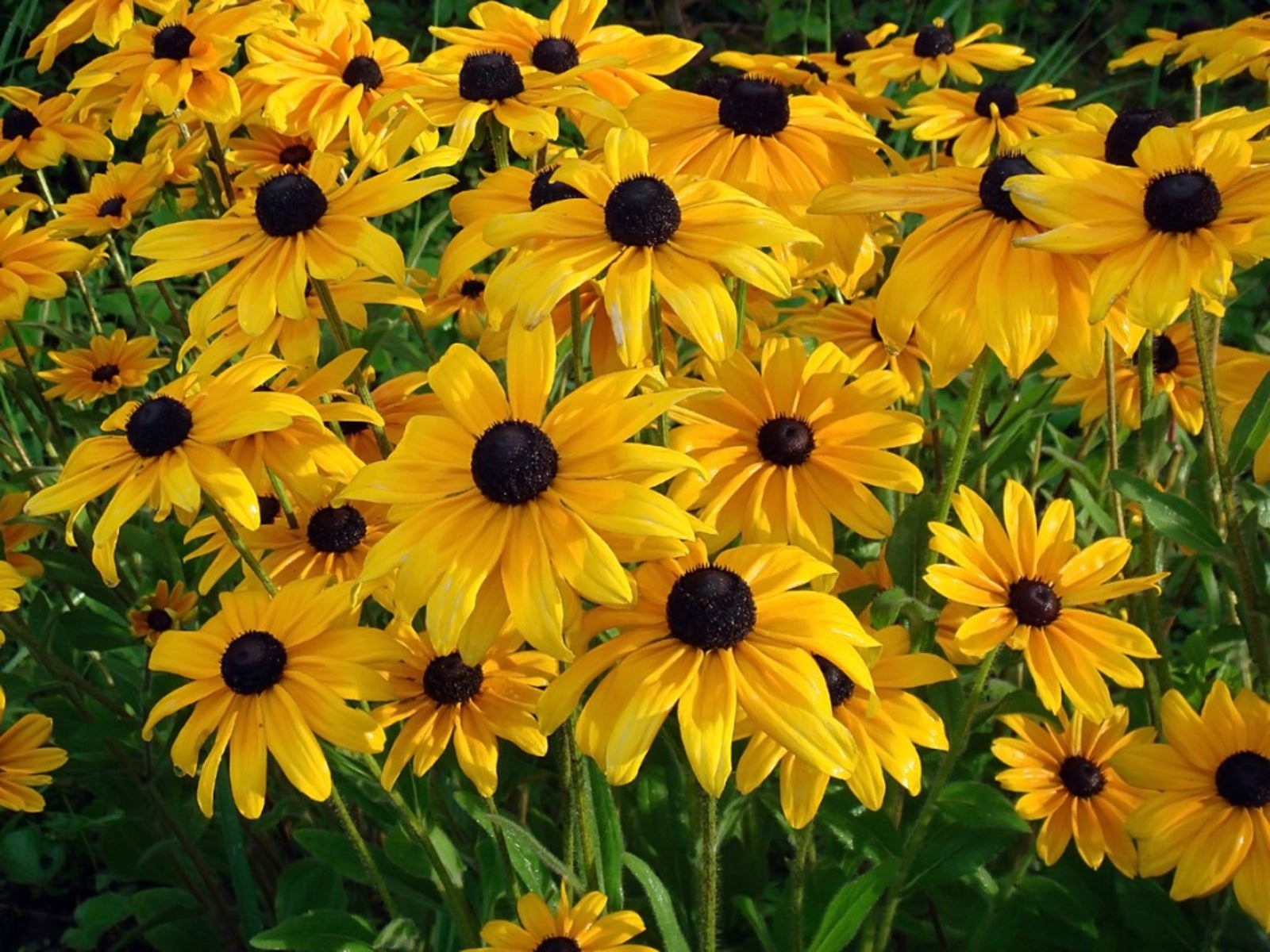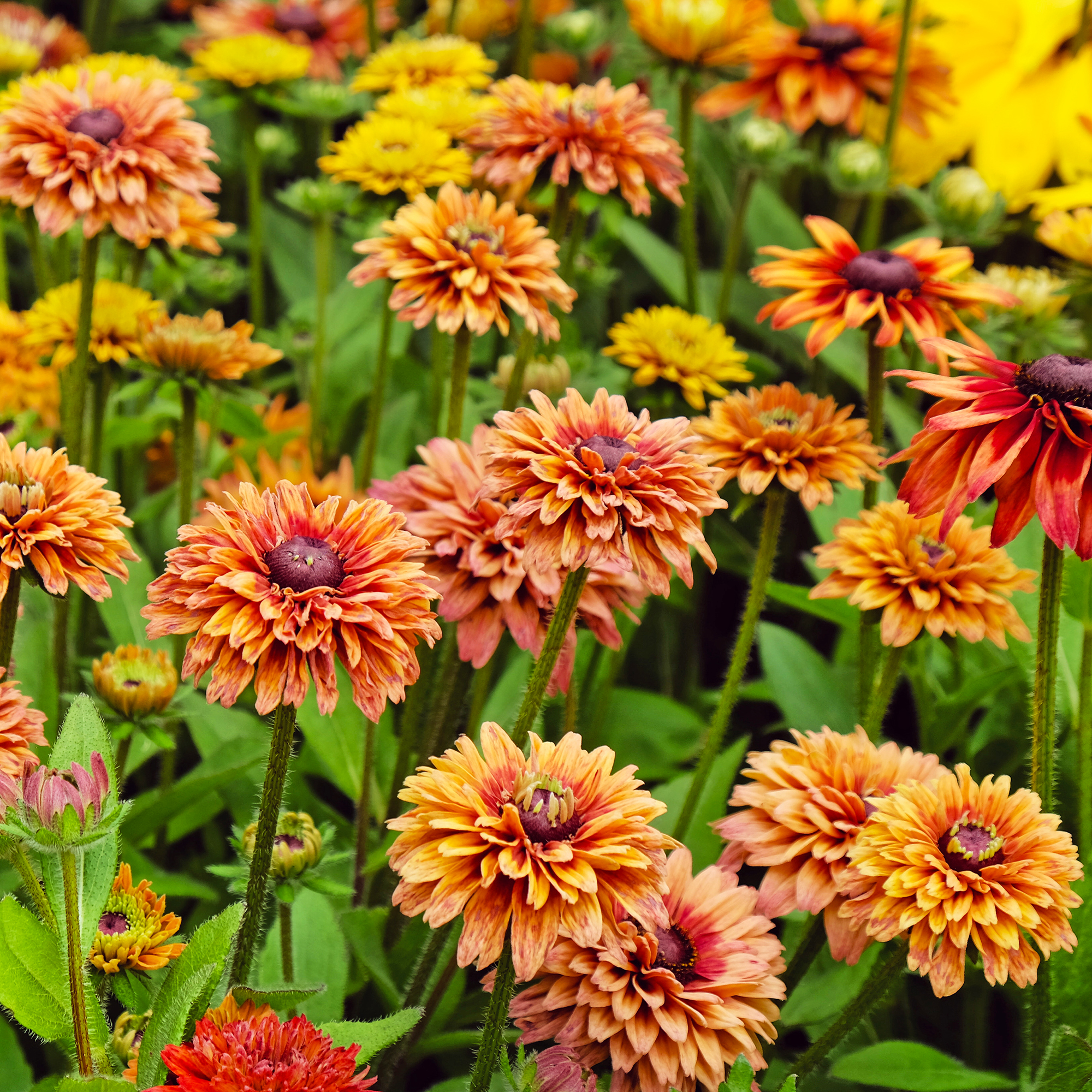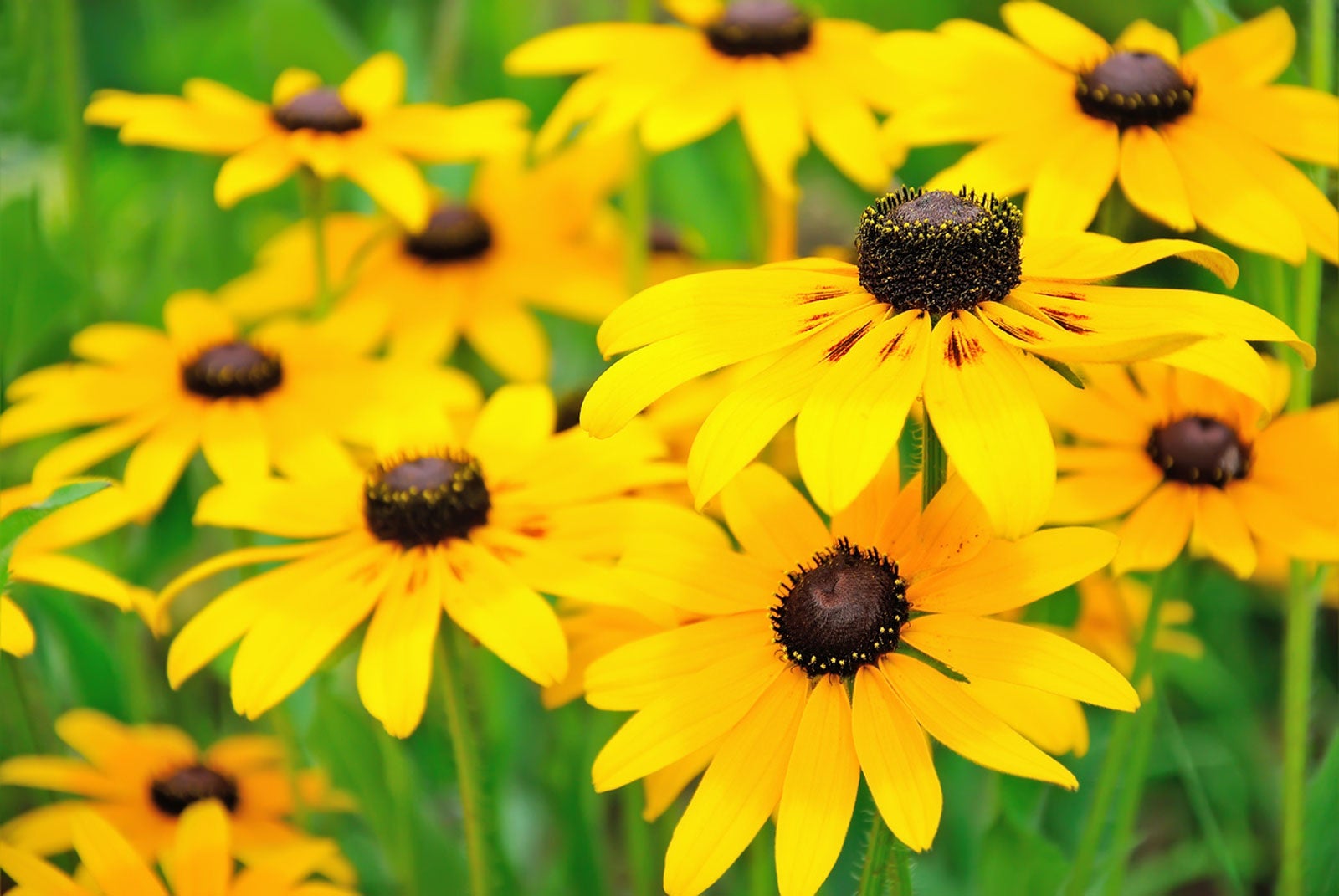Rudbeckia Leaf Spot: Treating Spots On Black Eyed Susan Leaves


There are few flowers as iconic as the black-eyed Susan-- these noble and tough prairie flowers capture the hearts and minds of the gardeners who grow them, sometimes in droves. Nothing is as breathtaking as a field full of these bright flowers, and nothing as devastating as discovering spots on black-eyed Susan. Although it seems like it should be a cause for serious alarm, most of the time spotted leaves on black-eyed Susan are only a minor annoyance with a simple cure.
Black-Eyed Susan Spots
Black spots on Rudbeckia, also known as black-eyed Susan, are very common and occur in a large percentage of the population each year. There are many causes, but the most common by far is the fungal disease called Septoria leaf spot, a common disease of tomatoes. The symptoms of common Rudbeckia leaf spot diseases are so similar though, that it's hard to distinguish between them without a microscope. Fortunately, none of these leaf spots are serious and can be treated with the same chemicals, making identification more of an intellectual exercise than a necessary step. Black-eyed Susan spots often start as small, dark brown lesions that grow up to ¼ inch (6 mm.) wide through the summer. Spots may remain round or develop more of an angular look when they run into leaf veins. Lesions usually start on leaves near the ground, but soon work their way up the plant through splashing water. These spots are primarily a cosmetic disease, though plants with many infected leaves may die back slightly earlier than non-infected plants. Black spots on Rudbeckia don't interfere with blooming.
Controlling Rudbeckia Leaf Spot
Spotted leaves on black-eyed Susan appear where fungal spores have been allowed to overwinter and conditions were right for reinfection in the spring. Tight spacing, overhead watering, and high humidity contribute to the spread of these leaf spot diseases-- the very nature of these plants makes breaking the disease cycle difficult. To maintain proper spacing for good air circulation, you'll have to aggressively pull volunteer seedlings that spring from the many seeds Rudbeckia produce in the fall. Removing spent foliage will help in small plantings, since it removes spore sources, but this is often impractical due to the nature of prairie plants. If your Rudbeckia suffers from leaf spots each season, you may consider applying a copper-based fungicide to the plants when they emerge and continue treating them on a schedule to prevent infection. Again, since the spots are mainly cosmetic, this may be a wasted effort if you don't mind spotty foliage. Many gardeners simply arrange their black-eyed Susans in group plantings, so the leaves are less obvious as the summer progresses.
Gardening tips, videos, info and more delivered right to your inbox!
Sign up for the Gardening Know How newsletter today and receive a free copy of our e-book "How to Grow Delicious Tomatoes".

Kristi Waterworth was a regular contributor to Gardening Know How for many years, answering countless queries on plant pests and diseases.
-
 Looking For Plants To Give You The Soft And Fuzzies? Try These 5 Fuzzy Leaf Plant Options
Looking For Plants To Give You The Soft And Fuzzies? Try These 5 Fuzzy Leaf Plant OptionsLovers of texture, drama, silver foliage and tactile plants will adore these special sensory garden additions. These fuzzy leaf plant options will leave you all aglow
By Susan Albert
-
 Get Ready For A Summer Of Hummers! Grow These Full Sun Hummingbird Plants and Flowers
Get Ready For A Summer Of Hummers! Grow These Full Sun Hummingbird Plants and FlowersIf you’re lucky enough to enjoy a sunny backyard, make sure you are maxing out on your pollinator opportunities and grow these full sun hummingbird plants and flowers
By Tonya Barnett
-
 10 Sensational Black-Eyed Susan Varieties – For Months Of Magnificant Fall Color
10 Sensational Black-Eyed Susan Varieties – For Months Of Magnificant Fall ColorBlack-eyed Susan – or Rudbeckia hirta – flowers for months on end, from the hazy days of summer until the end of fall. Discover the most stunning varieties to fill pots, beds, and borders in your garden.
By Tonya Barnett
-
 How To Collect Black Eyed Susan Seeds
How To Collect Black Eyed Susan SeedsCollecting seeds is a great way to expand your garden. Click to learn how to harvest and save black eyed Susan seeds.
By Laura Walters
-
 Guide To Rudbeckia Deadheading – How To Deadhead Black Eyed Susans
Guide To Rudbeckia Deadheading – How To Deadhead Black Eyed SusansDeadheading Black Eyed Susan flowers is not necessary but can prolong the blooming period and prevent the plants from seeding all over your landscape. Read more to learn how to deadhead Black Eyed Susans for control.
By Darcy Larum
-
 Learn About Black Eyed Susan Care
Learn About Black Eyed Susan CareRudbeckia, or black-eyed Susan, is a favorite daisy-like flower that's heat and drought-tolerant, and lights up a garden with its cheerful bright yellow color.
By Becca Badgett